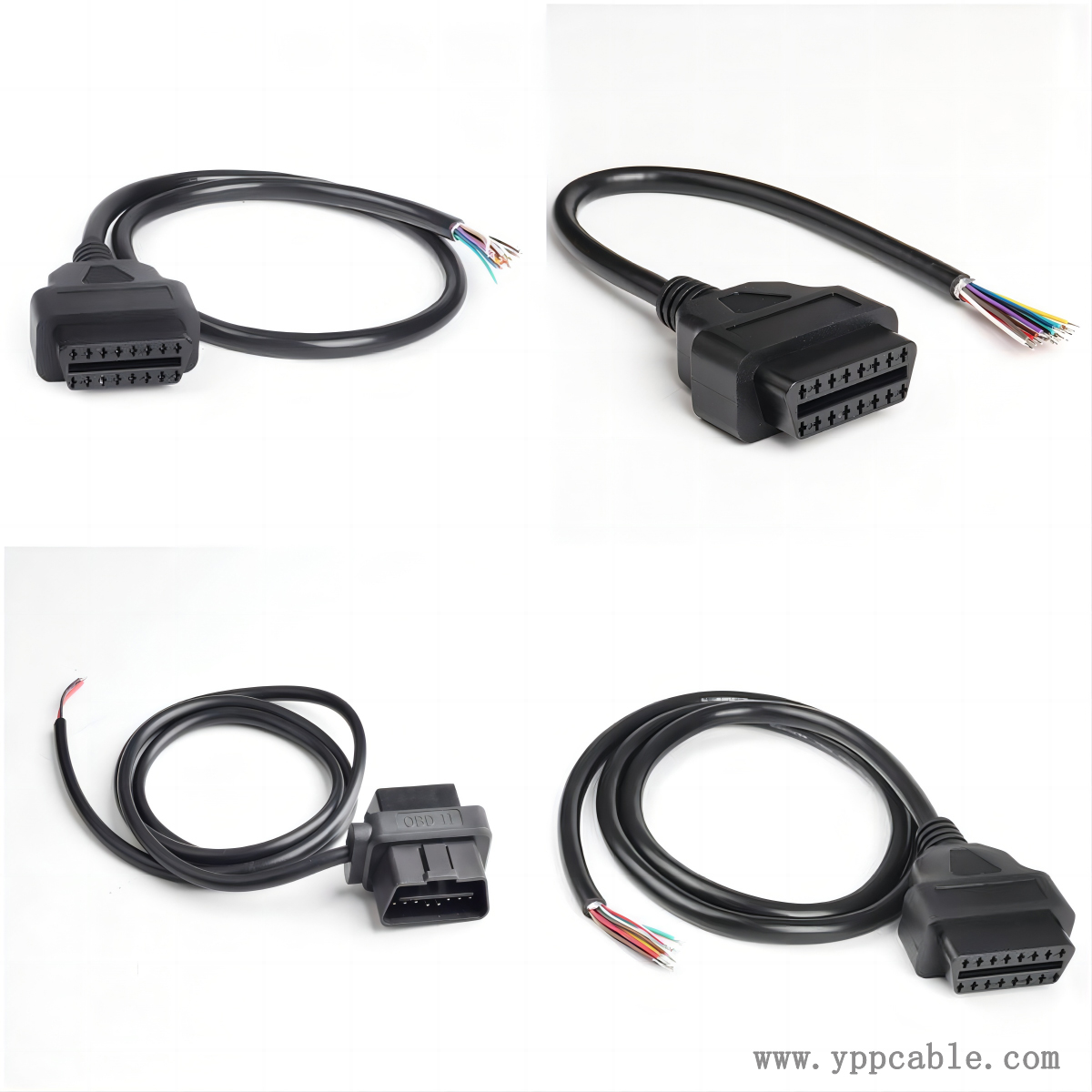As the standard diagnostic interface of modern automobiles, OBDII (On Board Diagnostics II, second-generation on-board diagnostic system) plays an important role in connecting the vehicle's electronic control system with external diagnostic equipment through its OBDII cable.

1、 Physical specifications of OBDII cables
The physical specifications of OBDII cables mainly focus on their connector types, cable specifications, and shielding design.
Connector type: The OBDII cable adopts a standardized 16 pin DLC (Data Link Connector) interface. This interface design ensures compatibility between the OBDII cable and the vehicle diagnostic interface, making it easy for any diagnostic equipment that complies with the OBDII standard to be connected.
Cable specifications: The cable specifications of OBDII cables are usually determined according to application requirements, but generally follow certain electrical and mechanical performance standards. For example, cables may use multiple stranded wires to improve flexibility, while using appropriate insulation materials to ensure electrical isolation and wear resistance.
Shielding design: To resist electromagnetic interference (EMI) and radio frequency interference (RFI), OBDII cables typically include a shielding layer. This design helps to protect the integrity of data signals and ensure accurate transmission of diagnostic information.
2、 Electrical specifications of OBDII cables
The electrical specifications of OBDII cables mainly focus on their voltage range, current limit, and communication protocol.
Voltage range: OBDII systems typically operate at 12V or 24V DC voltage, so OBD-II cables need to be able to withstand voltage fluctuations within this range. At the same time, the insulation layer of the cable also needs to have sufficient dielectric strength to prevent voltage breakdown.
Current limitation: Although OBDII cables mainly transmit digital signals, in some cases low current control signals or power supplies may need to be transmitted. Therefore, the design of cables needs to take into account these potential current demands and ensure that they operate within a safe range.
Communication protocol: OBDII cables follow multiple communication protocols, including ISO 9141-2, ISO 14230-4 (KWP2000), ISO 15765-4 (CAN), and SAE J1850. These protocols define key parameters such as data transmission format, baud rate, and error detection mechanism. OBDII cables need to be able to support at least one of these protocols to ensure compatibility and communication efficiency with vehicles.
Contact: Kevin Yu
Phone:
E-mail: yppcable@126.com
Whatsapp:
Add: FL2,Bld 6, Hongte Industrial Park, Yongtou , Changan, Dongguan, Guangdong